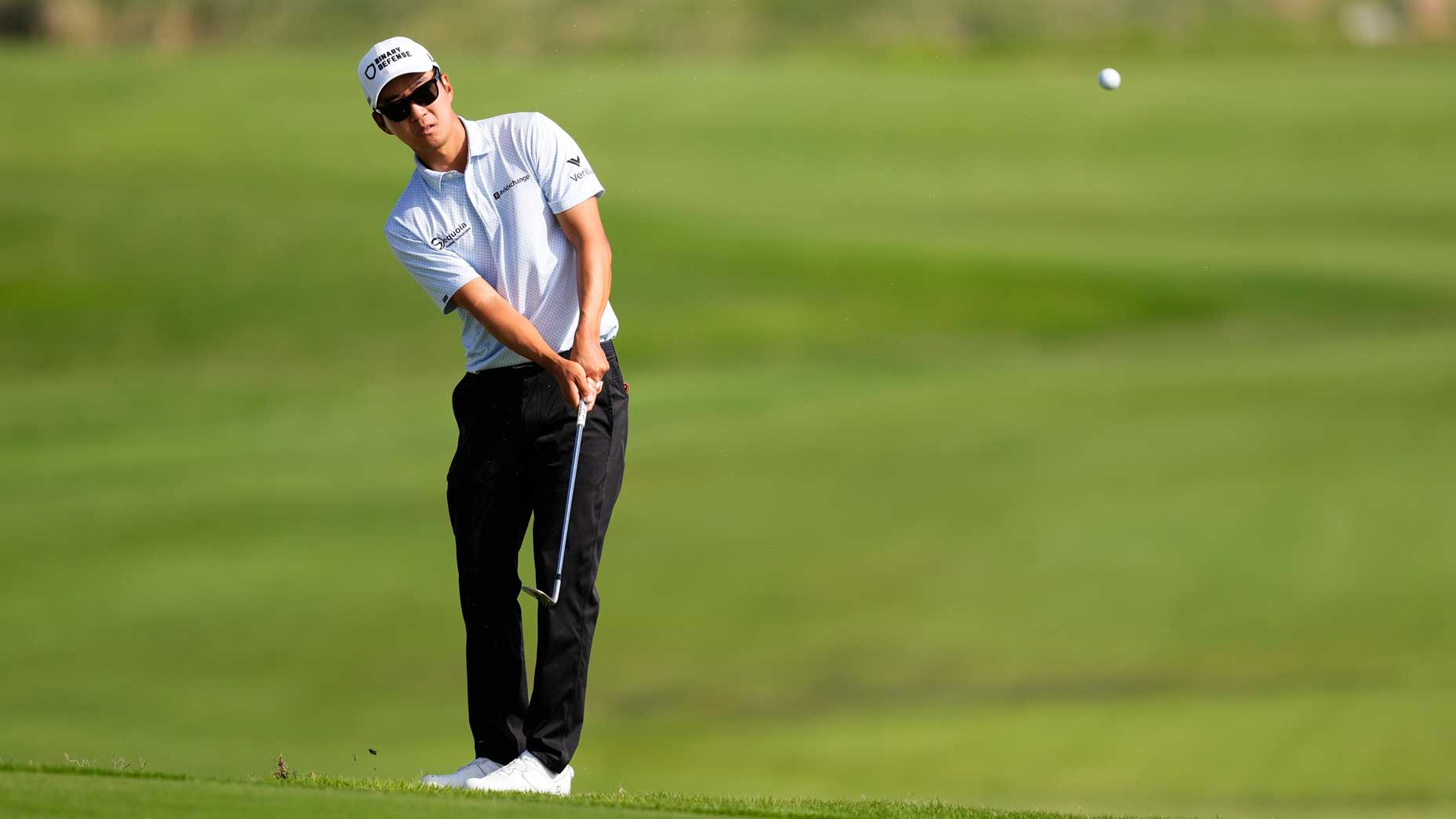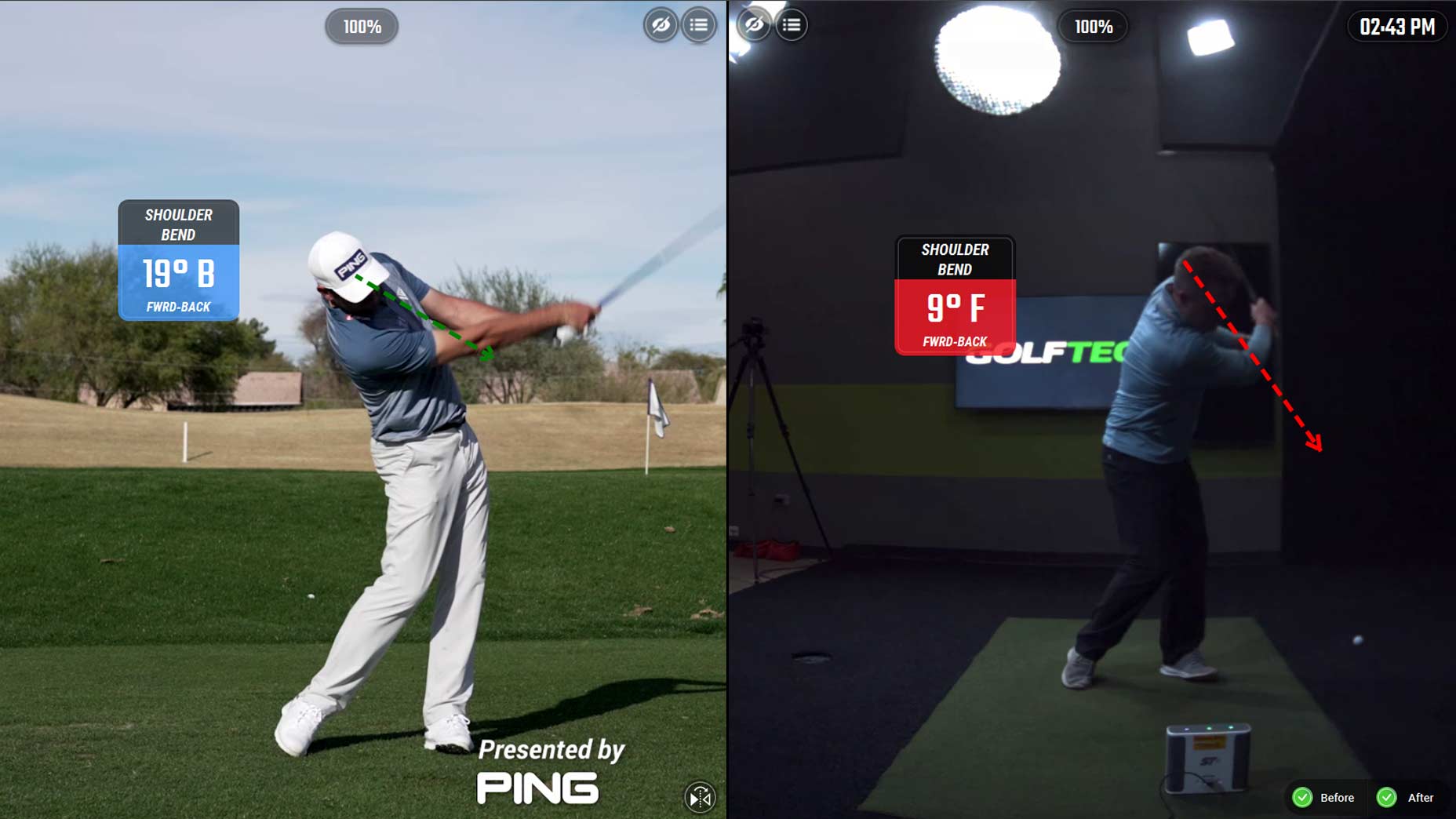If you’re not following Michael Kim on social media yet, you’re missing out.
The veteran PGA Tour pro has built a rather loyal following on Twitter through his takes on golf current events, recaps of each tournament and behind-the-scenes info on being a Tour pro. He also hasn’t been shy to share his takes on golf instruction or provide tips for amateurs.
His latest post falls under the latter two categories as Kim is offering his take on one of the hottest debates in golf instruction right now: To be shallow or steep with your pitch shots?
My video and 🧵 on shallow/steep chip shots
— Michael S. Kim (@Mike_kim714) June 22, 2024
Hopefully you guys can hear me enough… didn’t realize the audio wasn’t great until after. If you can’t hear at all, I’ll film it again
Comment with any questions you might have and I’ll try to answer them.
Also, Parker McLaughlin…
Keeping the club on a shallow plane is key for amateurs according to GOLF Top 100 Teacher to Watch and Tour short game coach Parker McLachlin, who’s also known as the Short Game Chef on social media.
But, fellow PGA Tour coach Joe Mayo helped reinvent Viktor Hovland’s short game by preaching for a steeper angle of attack around the greens.
On Saturday, Kim offered some tips and videos explaining how to hit both shots and where he might use one or the other. He was careful not to take a side on which one is the best.
“I’d like to make the point that one isn’t better or worse. It’s much more WHEN to do it,” he wrote on Twitter. “Each has properties that is better in certain situations than others. Think of it more like draw vs fade not an either/or. The shallow is better for when you want to hit a softer med-med high trajectory with a little bit of spin and it lands nice and soft. Steep is much better when you want something a little lower, a little more skip then spin, ball first solid contact. It’s prob a better motion for most bump and runs. I don’t think shallow is needed on bump and runs. Also much better way motion out of the rough. Certain lies do better with shallow, some do better with steep.
“It’s up to you to try and find what works for you.”
The shallow shot
First is shallow.
— Michael S. Kim (@Mike_kim714) June 22, 2024
Bullet points:
-Weight 50/50, club vertical, face open
-Steve stricker, Jason Day like, power source is from turn, no arms and wrist.
-Keep width during the entire swing.
-It’s ok to hit behind a tiny bit. Ur not trying to hit behind it tho, happens sort of… pic.twitter.com/rl0GE9B55Q
Kim likens the shallow shot to an underhand toss, explaining it will come out with a medium to a medium-high trajectory that lands softly with a little bit of spin. He says he uses this shot from tight lies in the fairway when he may not have a ton of green to work with.
Setup: Slightly open stance. Weight 50/50 on each foot. Clubface open. Shaft vertical (Ie. hands above the clubhead at address). Ball position middle.
Swing: Power source from turn, little arms and wrist movement. Keep wide arc.
Kim says the benefit of the shallow swing is that it’s very forgiving.
“Maybe 30 percent of the time, I actually hit a little behind the ball,” he said. “But that’s OK because the club is coming in so shallow, it hits the ground and using the bounce a little bit, it just pushes the ball up a little higher. And it’s really forgiving that way and one of the reasons I find it so useful on the golf course.”
Kim then explained that amateurs struggle with the shallow shot because they’re used to using their wrists and arms. So Kim offered a video on the “robot drill” to help practice and reinforce the technique. Essentially, you hit a pitch shot with your arms and wrists locked out in order to feel where the swing path should be.
Robot swing drill
— Michael S. Kim (@Mike_kim714) June 22, 2024
BP:
– Everything is locked in place, arms straight, wrists ulnar.
-keep height with head, turn, turn.
-Easy way to feel the shallow swing path pic.twitter.com/npGMEGfjg5
The steep shot
Steep
— Michael S. Kim (@Mike_kim714) June 22, 2024
(Something I forgot in the video, gripping down on it will also make you go steeper if you want it)
BP:
-Weight 70/30 on left. Ball position middle or slightly back
-Hands forward, face open
-Tilt left shoulder open and down
-Little wrist and arm hinge is ok. I personally… pic.twitter.com/GIqU8Re0FT
For the steep shot, Kim said this shot is basically “a low checker.” He uses this shot out of the fairway when he wants the ball to hit into a slope and then have spin once it gets on top and on the putting surface.
Setup: Open stance. Upper body turned open to match feet. Weight 70/30 on front foot. Clubface open. Shaft leans forward with hands ahead at address. Ball position middle or slightly back.
Swing: Wrist and arm hinge is OK, but not needed. Move head up on downswing to avoid digging. Swing in a “V” shape as opposed to a “U.”
He said the benefit is that the contact is better with more spin because of the steeper angle of attack.
“I get a much crisper contact, a nice thud to it,” Kim said.
While he doesn’t add any wrist or arm hinge, Kim says it’s OK to do so because it can help you increase the angle of attack. Kim says he prefers to keep his arms and wrists out of it to make distance control easier.
DTL view:
— Michael S. Kim (@Mike_kim714) June 22, 2024
Shallow is much more of a draw looking swing.
Steep is more on plane. You can even go more steep and outside than how I do it.
If you can see the ball flying, you can see the trajectory difference from the trees in the background. Hope the video quality doesn’t turn… pic.twitter.com/Jr4jEqvmUN
So the next time you’re at a practice green, try both the steep and the shallow swings and see which one you like and what situations you can use both.










